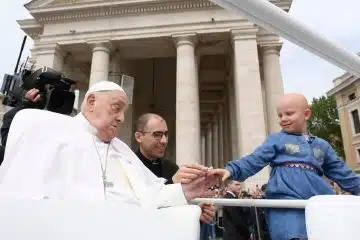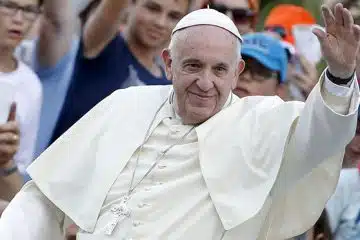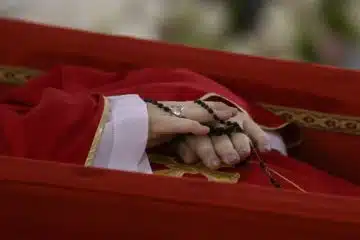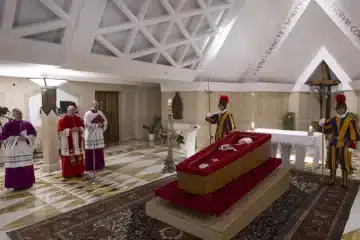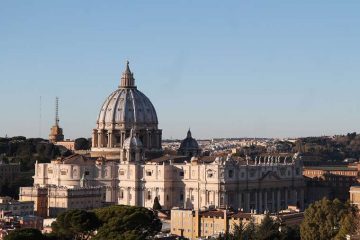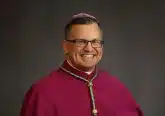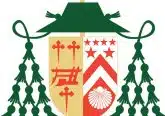Archbishops at the Cathedral Basilica Part II

A cathedral is the home church for the bishop or archbishop of a Catholic diocese. Ten bishops have served Catholics in the Archdiocese of Cincinnati, and their ministry is intertwined with the history of the Cathedral Basilica of St. Peter in Chains. This is part two of those archbishops’ histories. Part one is found in the March issue of The Catholic Telegraph.
Archbishop Karl J. Alter (1885-1977)
Born August 18, 1885, Karl J. Alter was ordained to the priesthood for his native diocese of Toledo in 1910 and appointed its bishop in 1931, where he served 19 years until being named Archbishop of Cincinnati in 1950.
He began and oversaw the restoration of St. Peter in Chains Cathedral, declaring, “We are going home in 1951.” He also supervised St. Gregory Seminary’s completion and about 130 other major building projects. Notable events at the cathedral during his tenure include a citywide memorial service to honor President John F. Kennedy, on December 22, 1963, and an interfaith memorial service for Dr. Martin Luther King Jr., on April 11, 1968.
Responsible for implementing Vatican II reforms in the Archdiocese of Cincinnati, Archbishop Alter inaugurated the use of English during his celebration of the Mass at the cathedral on November 29, 1964, which aired live on local television stations.
Archbishop Alter retired in 1969, but maintained an active and visible ministerial role in archdiocesan life until his death August 23, 1977.
Archbishop Paul F. Leibold (1914-1972)
Paul F. Leibold was born in Dayton on December 22, 1914, and graduated from Chaminade High School, then the University of Dayton, before his ordination to the priesthood on May 18, 1940.
Father Leibold served as chancellor of the Archdiocese of Cincinnati and as pastor of St. Louis Church. In 1958, he was named Auxiliary Bishop of Cincinnati, and named Bishop of Evansville eight years later.
In 1969, he returned to the diocese as Archbishop of Cincinnati and was known for his warmth and approachability. He launched the Sixth Archdiocesan Synod, involved laity in more decision-making and was devoted to ecumenism. He was archbishop when a pontifical Mass celebrated the Archdiocese of Cincinnati’s 150th anniversary, with apostolic delegate
Archbishop Luigi Raimondi as the primary celebrant.
Archbishop Leibold died suddenly on June 1, 1972, at the age of 57.
Cardinal Joseph L. Bernardin (1928-1996)
Joseph L. Bernardin was born in Columbia, SC, on April 2, 1928. Following studies at Mount St. Mary Seminary in Maryland, he was ordained in 1952 for the Diocese of Charleston and served as a parish priest and chancellor before being named Auxiliary Bishop of Atlanta.
Upon his appointment to lead the Archdiocese of Cincinnati in 1972, Archbishop Bernardin became the youngest archbishop in the United States. During his decade of tenure, he was president of the then National Conference of Catholic Bishops, from 1974 to 1977, and appointed four times (1974, 1977, 1980 and 1983) by his fellow bishops as one of four American delegates to the World Synod of Bishops in Rome.
In June 1974, St. Teresa of Calcutta was presented with the Peace Award of the North American Federation of the Third Order of St. Francis at St. Peter in Chains Cathedral. A year later at the same cathedral, Archbishop Bernardin reconsecrated the archdiocese to the Immaculate Heart of Mary during a solemn Mass. He celebrated the United States’ bicentennial during a pontifical Mass in July 1976. In September 1976, Pope St. John Paul II, while serving as Cardinal Archbishop of Krakow, visited the cathedral.
Cardinal Bernardin was appointed Archbishop of Chicago in 1982 and elevated to the rank of cardinal the following year. After a public and courageous battle with cancer, he died November 14, 1996, in Chicago.
This article appeared in the April 2025 edition of The Catholic Telegraph Magazine. For your complimentary subscription, click here.




